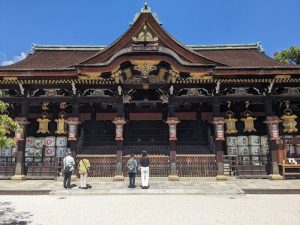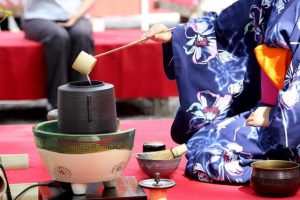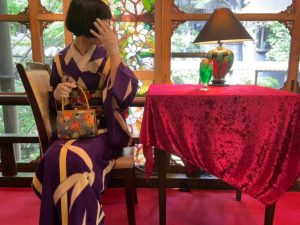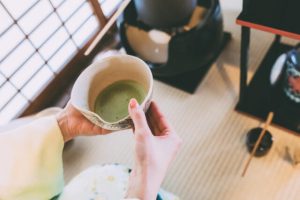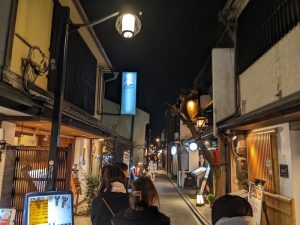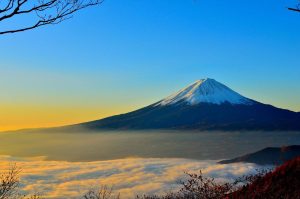Among the many tourist spots in Kyoto, we introduce the highly recognized and popular Kinkaku-ji! We’ll provide information about its features, highlights, access, insider tips, and more. A must-see for those planning to visit Kyoto!
About Kinkaku-ji’s history
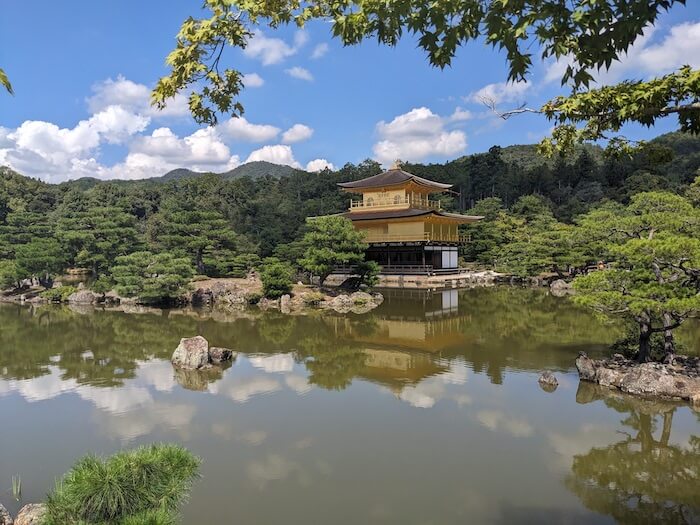
One of the sub-temples of the Shokoku-ji Temple, it is formally known as Rokuon-ji. It is commonly referred to as Kinkaku-ji due to the “Golden Pavilion” (Kinkaku) at the Shariden Hall being especially famous.
Its origins trace back to the construction of the North Mountain Palace by Ashikaga Yoshimitsu, the third shogun of the Muromachi Shogunate. The pavilion has three distinct architectural styles, with the second and third levels covered in pure gold leaf over lacquer.
The first level, known as “Hosuiin,” follows the architectural style of the Heian period, featuring half-sliding screens that can be opened on the southern side. Inside, a statue of Shaka Nyorai with a precious crown is enshrined, and unlike the other levels covered in gold leaf, the first level remains unpainted in white wood.
The second level, “Shoindou,” is a warrior-style building dedicated to the worship of Kannon. The floors and walls are black lacquered, with a statue of the Rock Cave Kannon seated on a miniature Shumidan altar, surrounded by the Four Heavenly Kings guarding it. The ceiling is adorned with heavenly beings, and the exterior walls and railings are covered in gold leaf, featuring phoenixes and dragons on the edge of the ceiling. The surroundings are enclosed by horizontal wooden lattice doors and plank walls. In 1987, Matsukyu Sorei restored it to its pre-fire condition.
The third level, “Kukkyouchou,” is indicated by the inscription on its front plaque. Gold is pressed onto the ceiling and walls, creating a luminous interior with translucent sliding doors. The roof is layered with thin cypress bark. Some of the gold leaf was reapplied in Heisei 14-15, and the roof was re-thatched in Heisei 15.
Some of the gold leaf was reapplied in Heisei 14-15, and the roof was re-thatched in Heisei 15.
Yukio Mishima and Kinkaku-ji
Yukio Mishima’s work “Kinkaku-ji” recounts the incident of the arson and destruction of Rokuon-ji by an apprentice monk in the early morning of July 2, 1950. Mishima narrates the disturbed mental state of the arsonist in elegant prose, using him as a mouthpiece to explore the concept of “beauty.”
Let’s Explore Kinkaku-ji!
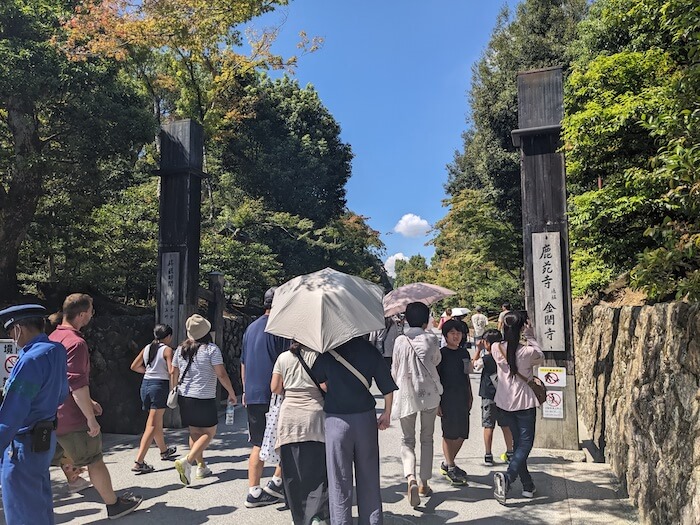
First, let’s start at the entrance of Kinkaku-ji. There are multiple entrances to Kinkaku-ji, but if you’re taking a bus from Kyoto Station or Shijo Station, you’ll most likely get off at the bus rotary here and proceed through this entrance. It’s quite bustling with many foreign tourists!
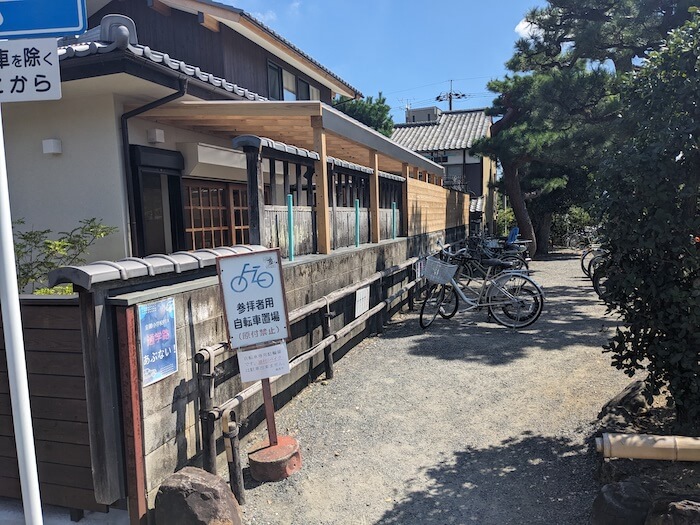
For those arriving by bicycle or rental bike from the station, there’s a recommended free bicycle parking area here! Be sure to use it!
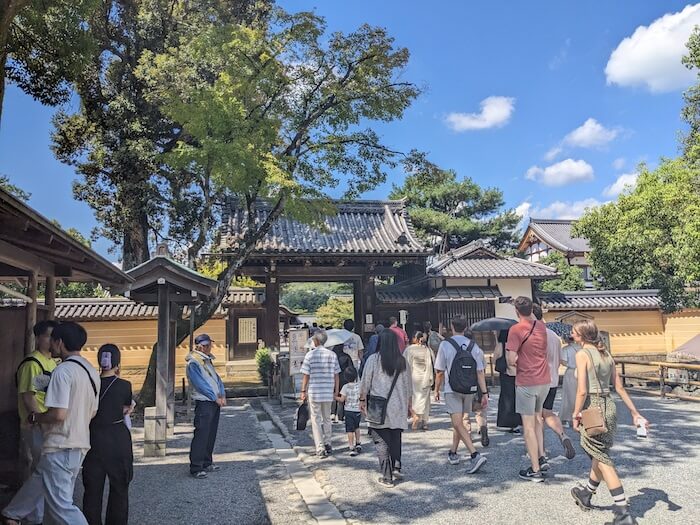
Once you pass through the entrance, continue deeper into the area. Before reaching Kinkaku-ji itself, you’ll encounter several gates and gardens, allowing you to fully immerse yourself in the atmosphere of Kyoto along the way.
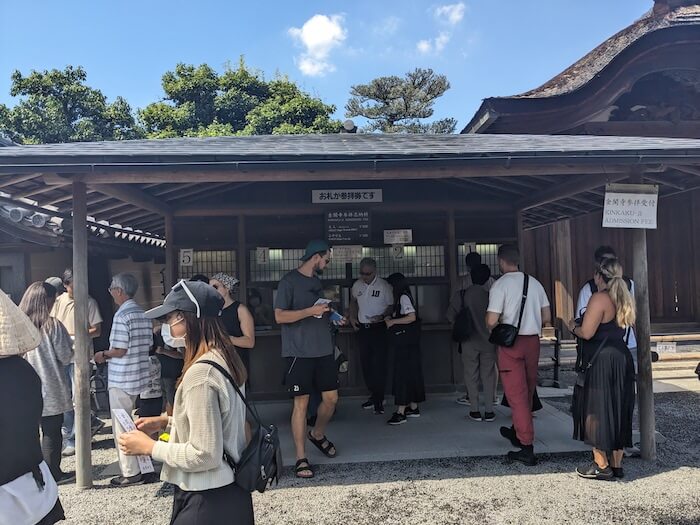
You’ve arrived at the ticket counter for Kinkaku-ji. Here, you’ll line up to purchase your admission ticket. The fees are 500 yen for adults and 300 yen for elementary and middle school students!
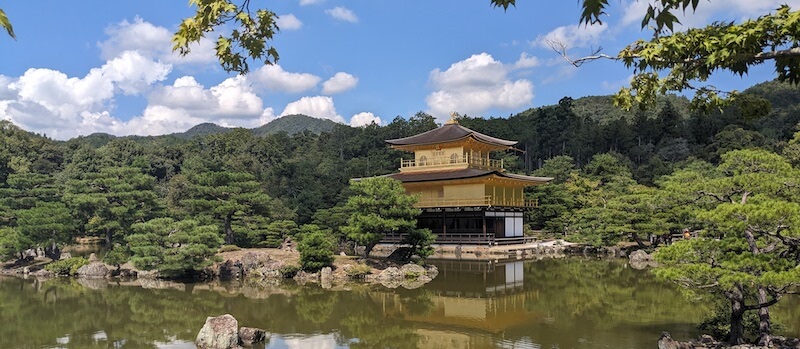
Show your admission ticket to the staff at the gate, and you’ll soon catch a glimpse of Kinkaku-ji. Kinkaku-ji stands by a wide pond. This pond is called “Mirror Lake” (Kyoukoike), and it’s named this way because Kinkaku-ji reflects on the surface of the lake. Due to this reflection, the Kinkaku-ji seen in the Mirror Lake is often referred to as the “Upside-Down Kinkaku.”
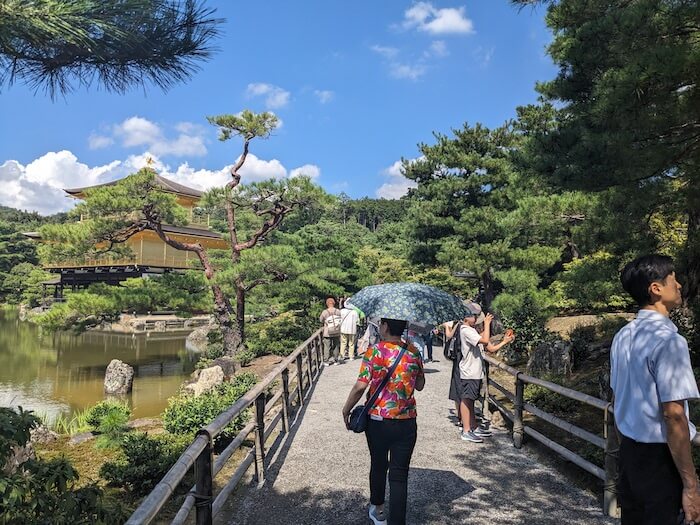
Walk along the path next to the designated photo spot, and you’ll get closer to Kinkaku-ji.
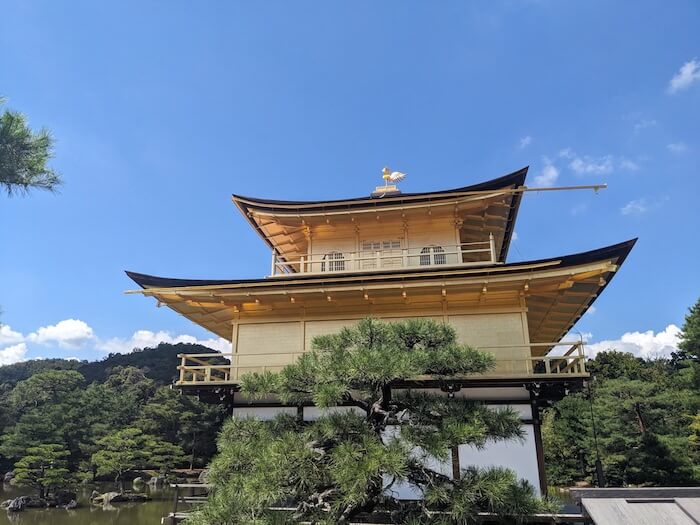
You can also get closer to Kinkaku-ji. Viewing it up close reveals its grandeur and exquisite design, which is quite different from the view from afar.
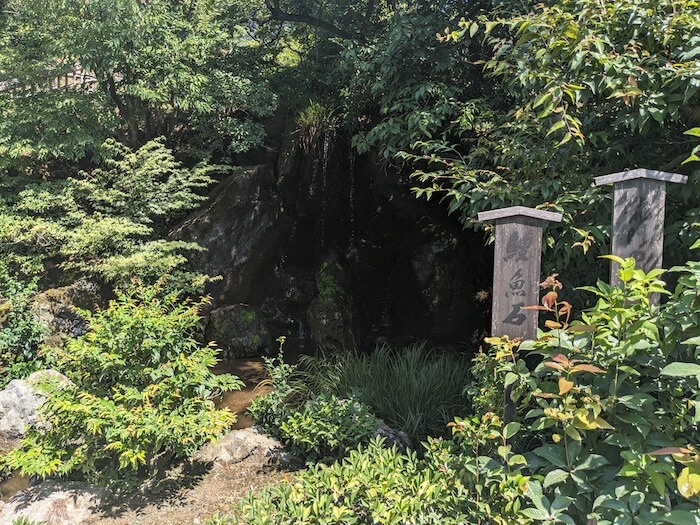
After finishing your visit to Kinkaku-ji and walking a bit further, you’ll come across a waterfall. This is a 2.3-meter-tall waterfall and is said to be the site of a mountain villa once owned by the Saionji family, passed down to Ashikaga Yoshimitsu.
In China, there’s a rapid called the Dragon Gate in the Yellow River, and there’s a legend that says that carp that successfully climb this waterfall become dragons. In reference to this, the waterfall is called “Ryumon Waterfall” (Ryumon no Taki), and the central rock is likened to a carp and is called “Koi Fish Rock” (Rigyo Seki).

Along the way, you’ll find several shops scattered about. If you’re interested in unique souvenirs and charms that you can only purchase at Kinkaku-ji, be sure to take a look!
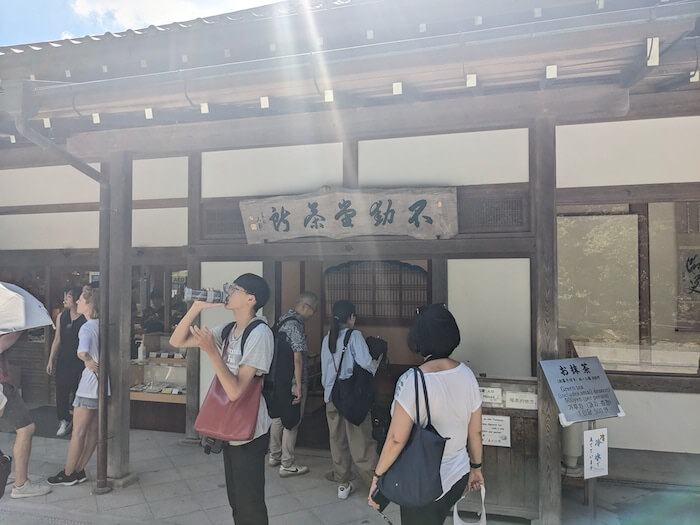
After wandering around the temple grounds, you’ll find a place where you can take a break.
Located beside the oldest building within the temple known as “Fudodo,” there’s the “Kinkaku-ji Fudo Kamacha-dokoro” (Kinkaku-ji Fudo Tea House). You can relax both inside the shop and in the garden outside. It has a charming atmosphere, and they also offer specialty sweets that you can only enjoy here. Be sure to give them a try!
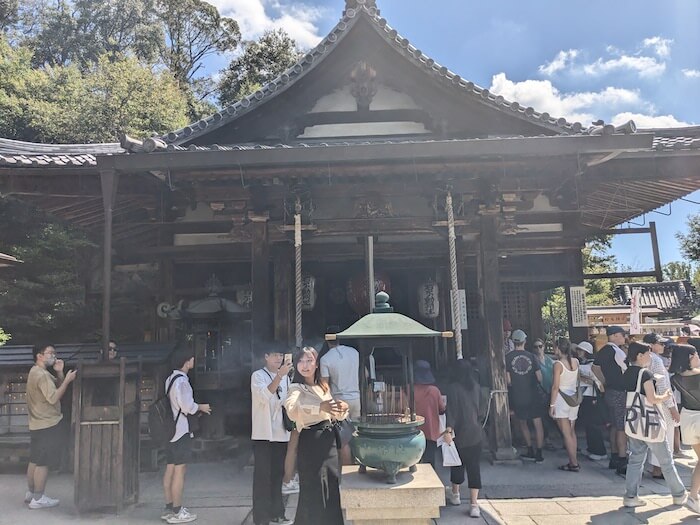
After wandering around the temple grounds, you’ll find a place where you can take a break.
Located beside the oldest building within the temple known as “Fudodo,” there’s the “Kinkaku-ji Fudo Kamacha-dokoro” (Kinkaku-ji Fudo Tea House). You can relax both inside the shop and in the garden outside. It has a charming atmosphere, and they also offer specialty sweets that you can only enjoy here. Be sure to give them a try!
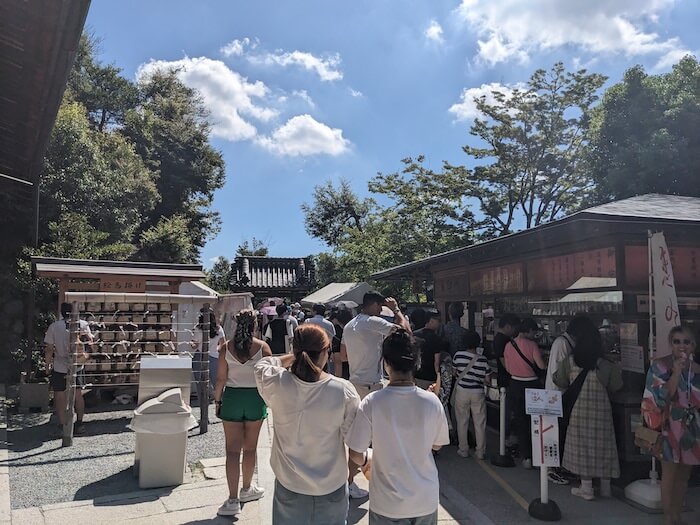
Around Kinkaku-ji, there are many charming shops and sweets establishments, so if you have an hour, you should be able to visit most of them. Visit other tourist attractions as well and fully enjoy the charm of Kyoto!
Here are the details for Kinkaku-ji
| Location | 1 Kinkakuji-cho, Kita-ku, Kyoto 603-8361, Japan |
| Opening Hours | 9:00 AM to 5:00 PM |
| Access | From JR Kyoto Station, take the City Bus Route 205 to “Kinkaku-ji Michi” bus stop, which is approximately a 5-minute walk from there. |
| Admission Fees | Adults (High School Students and Above): 500 yen Children (Elementary and Middle School Students): 300 yen |
[sf_button colour=”accent” type=”standard” size=”standard” link=”https://www.shokoku-ji.jp/kinkakuji/” target=”_blank” icon=”” dropshadow=”no” rounded=”no” extraclass=””]See more[/sf_button]

